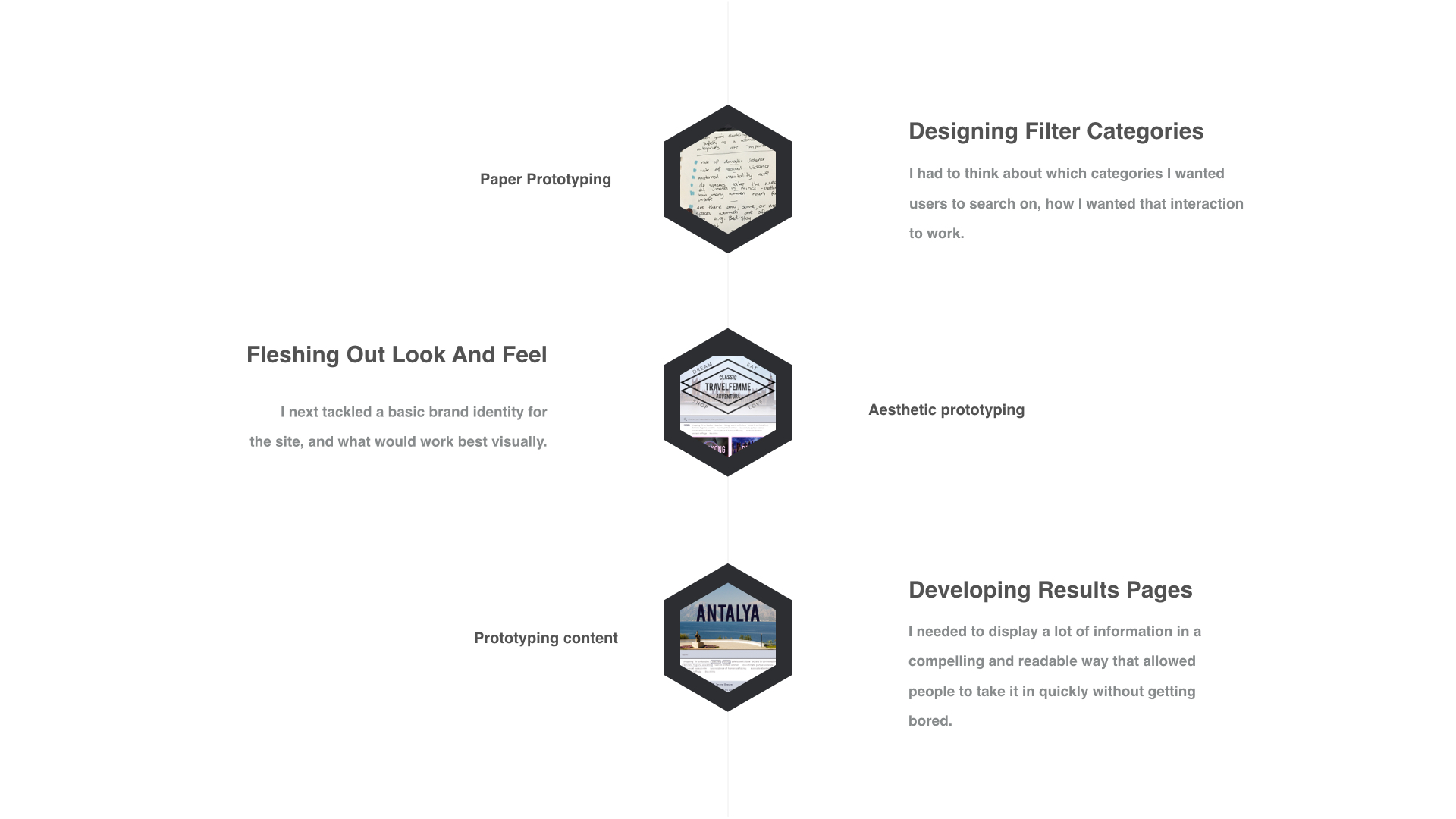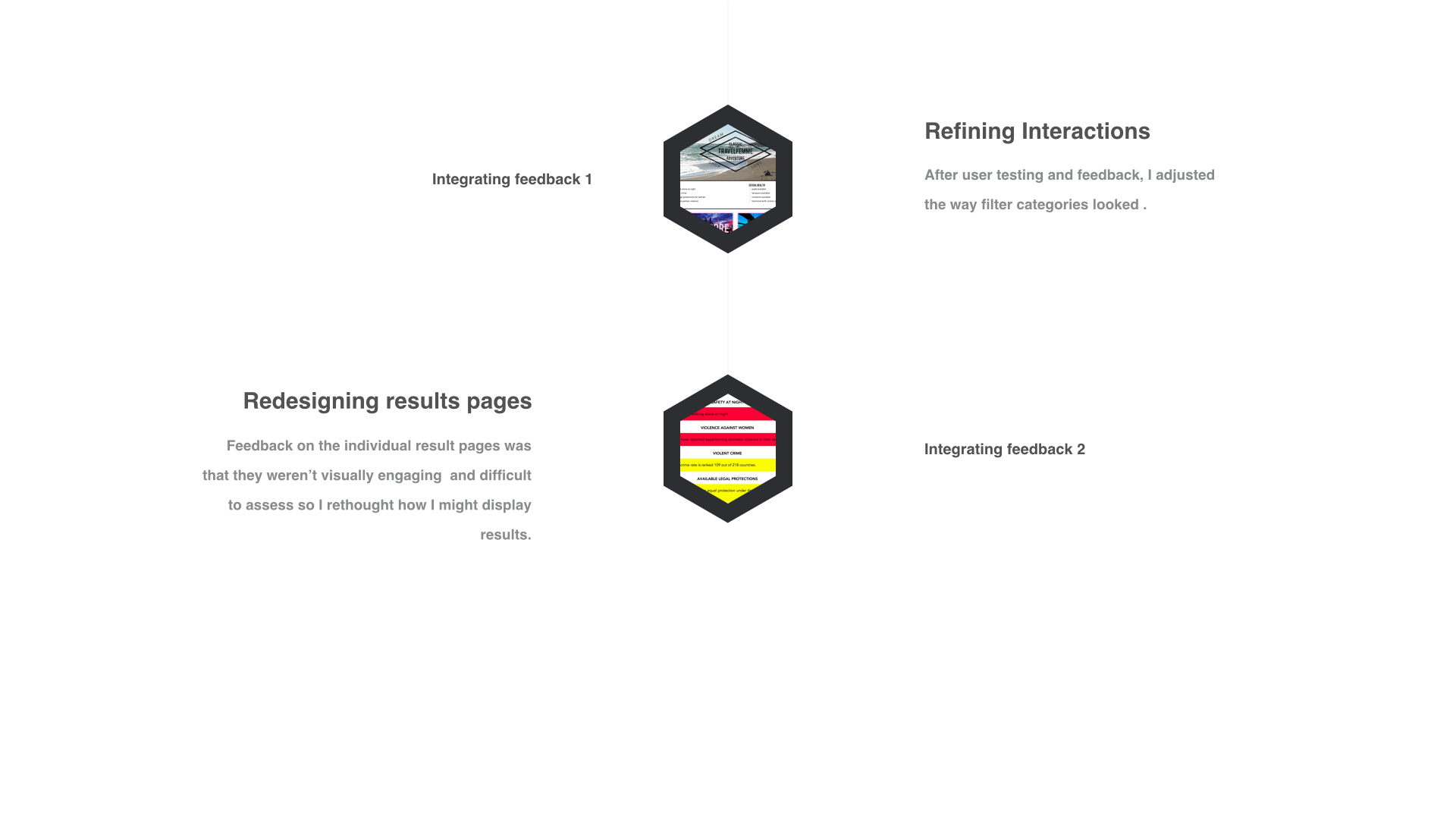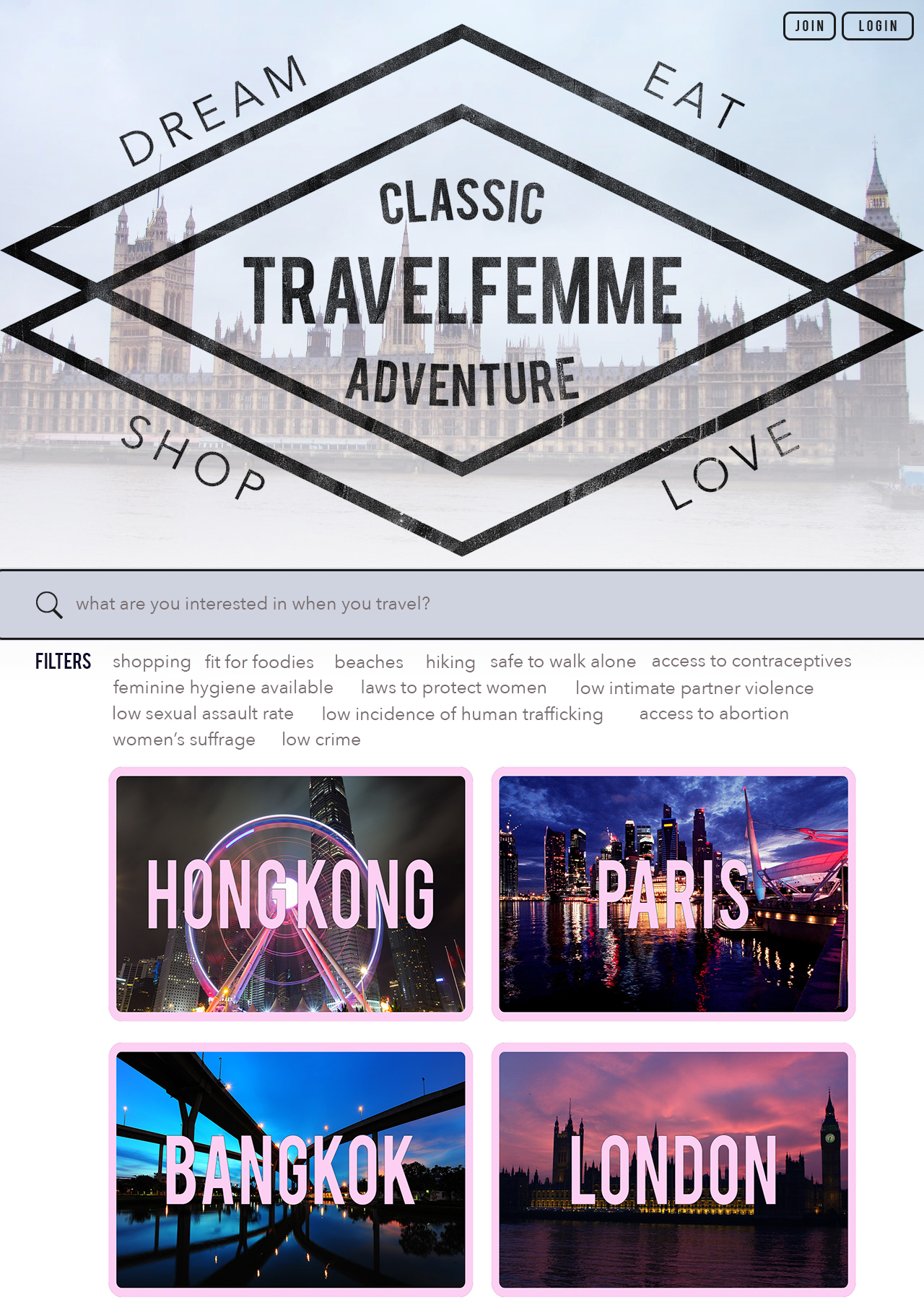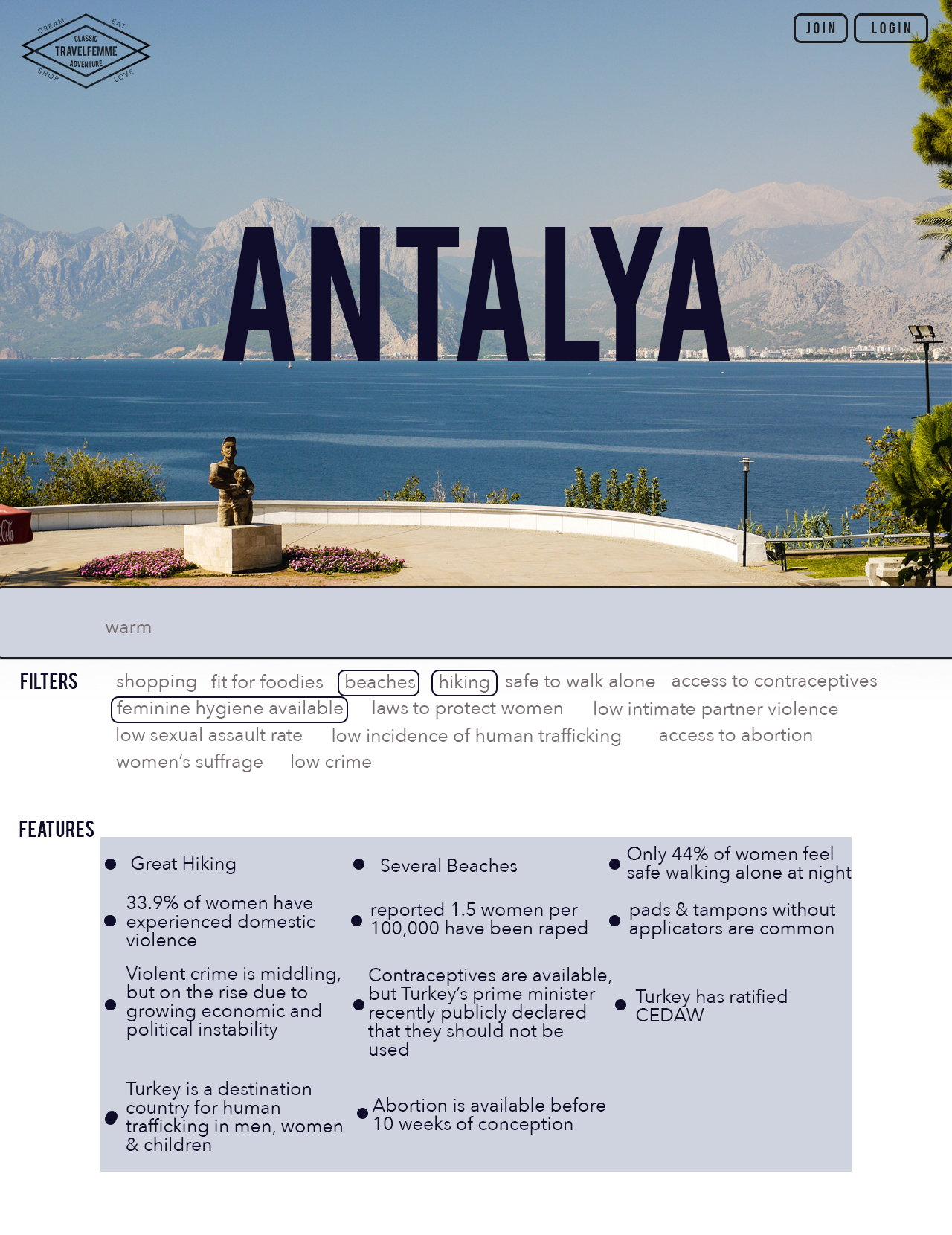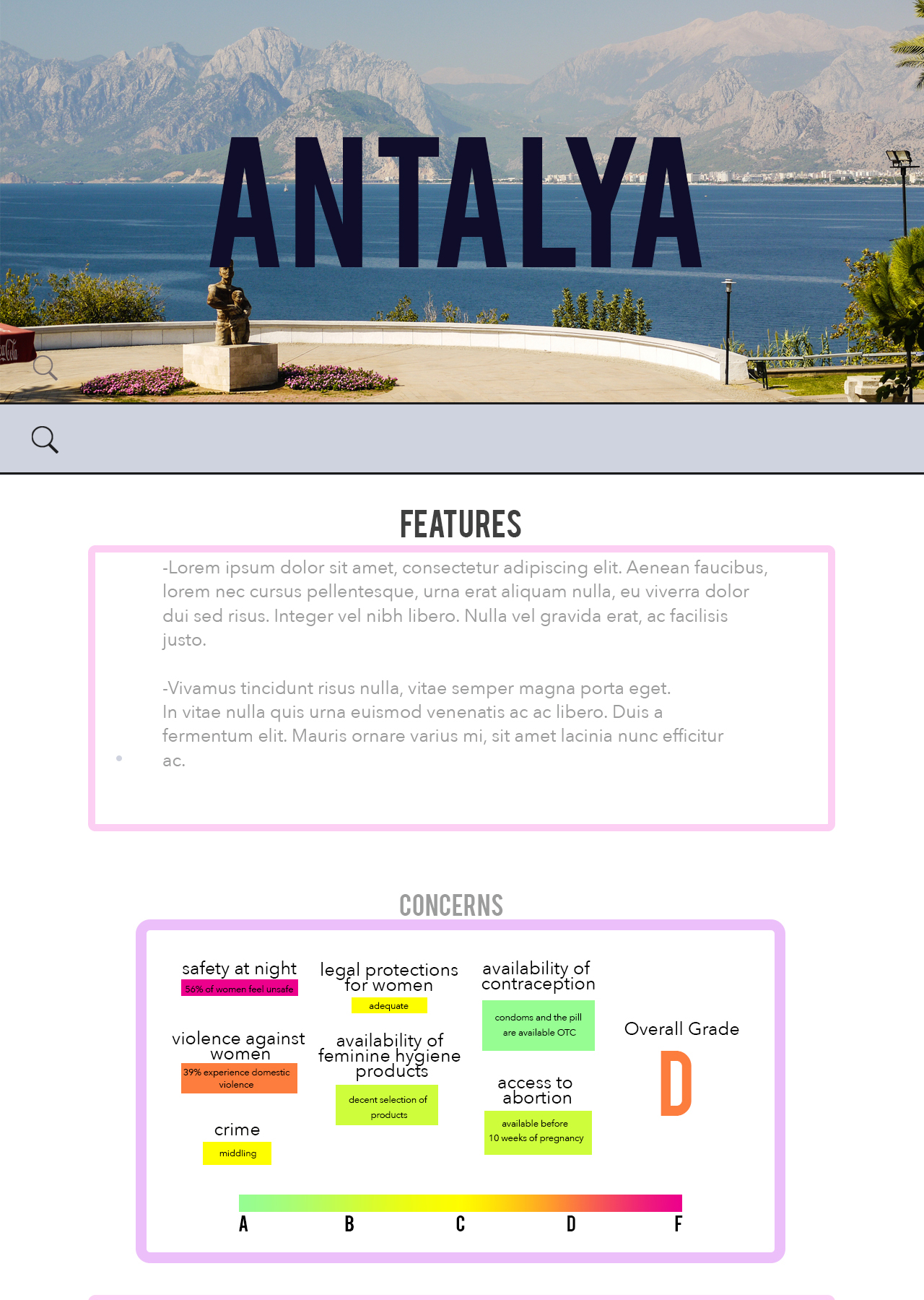Background
Travel Sites—places that aid in booking trips, rating destinations, and learning what places to see, such as Frommer’s and Lonely Planet and Nomad List abound on the internet. There are also many sites that exist to highlight the dangers women face while traveling. I decided to create a site that would allow women to evaluate travel destinations based on the unique concerns they face. This was to serve two purposes, one to make women aware of their best options for travel, but the greater purpose was to highlight all of the compromises women have to make in daily life in order to guarantee their health and wellbeing. Where on earth do women really exist in complete safety?

